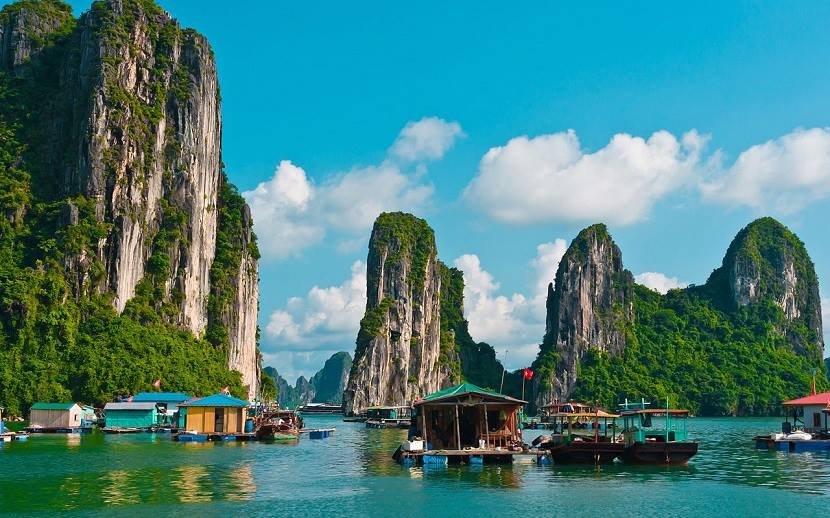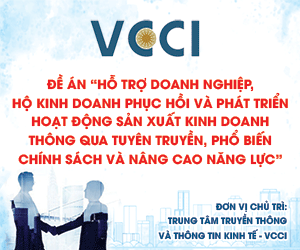Global trade tensions could trigger corporate restructuring in Vietnam: Expert
Aligning with international norms in business organization will not only promote transparency but also enhance Vietnam’s standing in the global economy.
As global trade tensions continue to escalate, particularly with the US, Vietnam is making strategic moves to adapt. The country is actively engaged in negotiations and implementing flexible responses.
In an interview with The Hanoi Times, Financial expert Nguyen Tri Hieu, Director of the Institute for Global Financial and Real Estate Market Research and Development, highlighted the importance of business restructuring to maintain Vietnam’s competitive position on the global stage and build a more transparent economy.

Dr. Nguyen Tri Hieu, financial expert.
With the US imposing high reciprocal tariffs on Vietnamese imports, what should Vietnam do?
From the government's side, I highly appreciate Vietnam's goodwill in sending a delegation to the US to negotiate tariffs. If these talks yield positive results, the US may postpone the imposition of the 46% reciprocal tariffs on Vietnamese imports, giving both sides more time to reach an agreement. The delegation's mission helps resolve tariff-related issues, seeks opportunities, and promotes investment cooperation with US companies, particularly in sectors such as technology, oil and gas, defense, and civil aviation.
However, it is important to understand why the US has imposed such high tariffs on Vietnam. This is a complex issue involving both tariff and non-tariff issues. We must carefully analyze and negotiate each point to reach a mutual understanding that balances the interests of both parties.
What should Vietnamese businesses do if the 46% tariffs are levied without further delay?
First, companies must avoid re-exporting Chinese goods to the US under Vietnamese labels. Any such practice, if it exists, must be stopped immediately by the authorities. Second, Vietnamese exporters should consider lowering prices to their US partners. US tariffs are typically calculated based on shipping documents and cost structures under terms such as Free on Board (FOB) or Cost, Insurance and Freight (CIF).
Vietnamese businesses should assess whether they can reduce costs under these arrangements. This could lower the duties paid to the US government and reduce the final price for American consumers.
But companies need to tread carefully. If they cut prices too much, they risk facing anti-dumping lawsuits from US companies, as has happened to several Vietnamese firms in the past. In short, producers should explore legal ways to reduce prices while complying with international practices and trade agreements. Third, Vietnamese firms should explore alternative markets beyond the US. One potential market is China, which is geographically close and has high demand.

Tan Cang Port in the northern city of Haiphong. Photo: T.Binh/The Hanoi Times
While Vietnam has long relied on China for imports, it's time to increase exports to this large market. In addition, priority should be given to expanding exports to the EU, Central Africa, South America, and Australia, regions with significant potential. Finally, Vietnamese enterprises need to restructure to improve production efficiency. This would help reduce costs and increase the competitiveness of Vietnamese goods. Exporters also need to have a clear understanding of the rules under free trade agreements, particularly those related to food safety, environmental standards, labor, intellectual property, and sustainability.
How about developing the domestic market as a way to offset the decline in exports?
This is certainly a necessary solution. When exports are affected, it makes sense to turn to the domestic market. Vietnam has long pursued a shift from "Made in Vietnam" to "Make in Vietnam," emphasizing domestic production. That said, we must honestly acknowledge the limitations of the domestic market. Vietnam's import-export value is almost twice the country's GDP.
So if goods can't be exported, oversupply becomes a real issue. This could lead to stagflation, a situation in which inflation and stagnation occur simultaneously. Therefore, while businesses should refocus on the domestic market, they must also continue to seek and expand into new export markets.
What should the government do to stimulate the domestic market?
The government must continue reforming existing policies on taxation, business regulations, and governance. Vietnam has already introduced a series of revised laws, such as the Law on Credit Institutions (2024), the Law on Land (2024), the Law on Real Estate Business (2024), and the Housing Law (2023). These legislative updates show Vietnam's proactive efforts to create a more orderly and tightly regulated economy. Another point to consider is the potential decline in foreign direct investment (FDI) into Vietnam in the near future.
As a result, the government needs to take steps to support and attract FDI. At the same time, domestic policies and laws should continue to evolve to meet the demands of the current environment, especially as US President Donald Trump seeks to reshape the global order, including in the economic sphere. In such a volatile global context, Vietnam needs flexible and timely policy responses.

Seafood processing for export in Ba Ria - Vung Tau. Photo: Chien Cong/The Hanoi Times
Some said the US reciprocal tariffs were not only a challenge but also an opportunity for Vietnam to transform its production, business, and export models. What's your view?
Absolutely, it is a "golden opportunity." It’s a chance for Vietnam to rethink how businesses are organized and run. Transparency of information is crucial when dealing with international markets. As we enter the global arena where rules and standards are constantly evolving, Vietnamese businesses must be proactive and adhere to these rules. In other words, enterprises must restructure and adapt to meet the demands of the global market.
Aligning business organization with international norms will promote transparency and enhance Vietnam's standing in the global economy. In addition, Vietnam should focus on developing high value-added industries such as advanced technology, smart manufacturing, and sectors with strong export potential beyond the US market. This is not just a short-term fix, but a long-term strategy to boost the country's global competitiveness.
What do you think about balancing trade between Vietnam and the US?
Currently, the Vietnam-US trade balance is significantly skewed, with Vietnam running a trade surplus of nearly US$120 billion. Meanwhile, imports from the US account for only about 10% of Vietnam's total trade. Balancing this trade relationship is something we must act on immediately. Vietnam should expand trade partnerships with other countries to reduce its heavy reliance on the US market.
A major challenge is the allegation that Vietnam is a transit point for goods from countries circumventing high US tariffs. Therefore, we need to review our FDI portfolio and clarify the origin of goods as a basis for negotiating tariff policies with the US.
Furthermore, authorities should provide businesses with early information on reciprocal duties so that they can prepare data and respond effectively. This will help protect their interests in the US market and reduce the impact of new tariffs on Vietnamese manufacturers and exporters.
Thank you for your time!








